The flowers of the elder, Sambucus nigra, fill the spring air with a sweet fragrance. When fresh, they can be used to make elderflower cordial, among other things. By drying them, you can enjoy their benefits throughout the year, particularly as a herbal tea.
Which elder are we talking about?
First, it's essential to correctly identify the plant. Indeed, there are several types of elder, some of which are toxic. It is therefore crucial not to make a mistake. We are referring here to the black elder, or Sambucus nigra, which must not be confused with the dwarf elder (Sambucus ebulus), which is toxic.
The black elder is a shrub with woody branches that can reach 4 to 5 metres in height, whereas the dwarf elder, Sambucus ebulus, is a herbaceous plant that grows up to 1.5 metres and dies back in winter. Confusion mainly occurs when picking berries for elderberry jam. Remember that the fruits of the black elder, which are edible after cooking, grow in corymbs that hang downwards, while those of the dwarf elder, which are toxic, grow upright.
For herbal tea, look for black elders closest to the species type. Indeed, there are now many horticultural varieties with highly decorative and ornamental characteristics, which have not, therefore, been selected for culinary use.
I would therefore recommend choosing those for which the fruiting season is specified. Thus, apart from the species type Sambucus nigra, you can opt for varieties such as Sambucus nigra Haschberg, which will also provide beautiful berries for making jams. Provided, of course, you leave some flowers on the tree. These berries will also be beneficial for biodiversity, offering a valuable food source for birds that will undoubtedly visit your garden the following winter.
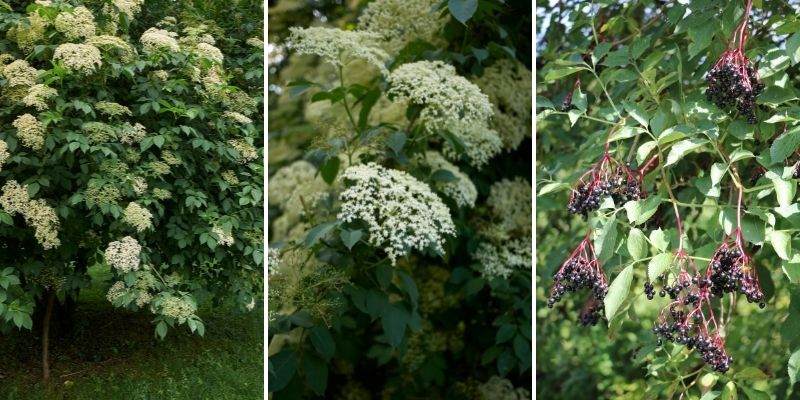
Sambucus nigra
When to pick elderflowers?
Here, we will harvest the elderflowers. These are very small, with five petals, and are grouped in corymbs, a type of flower cluster.
Harvesting takes place in spring, during the flowering period around late May, although this may vary depending on the region and weather.
How to harvest elderflowers?
Pick the corymbs when the flowers are fully open. To know if it's the right time to harvest, check if pollen comes off when you brush your hand over the flowers. If it does, it's time to pick. Ideally, don't wait too long. The corymbs should not be wilted at all. Indeed, on corymbs that have been flowering for a few days, even if some flowers are still beautiful, others tend to lose their petals very easily.
Elderflower clusters are very easy to pick. You won't need scissors, secateurs, or any other cutting tools. A simple pinch at the base of the flower clusters with your fingers will suffice. Shake or tap them lightly to remove the many insects that live on them. Place the picked flowers gently in a basket, for example. They are quite fragile.
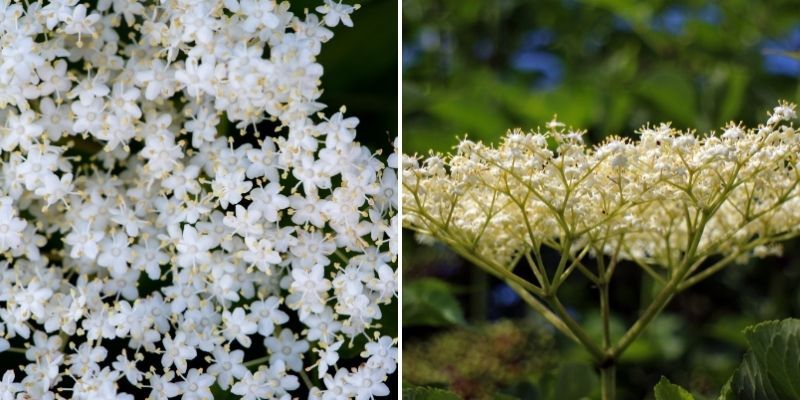
On the left, the small flowers of the black elder seen up close; on the right, a corymb inflorescence
How to dry them?
Since the flowers are quite small, they dry quickly, in 2 or 3 days, in a shady, dry, and well-ventilated place. Be careful to place the corymbs upside down on a cloth to catch all the petals that will fall during drying. Spread the flowers out in a single layer to avoid any risk of mould. And keep them away from light. The flowers are very delicate.
After drying, they should retain a fairly light cream colour and not turn brown.
It's important to note that it's the flowers that are used for herbal tea, not the inflorescences—that is, the flower clusters. Therefore, you need to remove the peduncles—the flower stems. The easiest way to do this is to wait until the flowers are dry. It will then be easy to separate them and remove the peduncles by holding the stem with one hand while gently squeezing the other around the flowers to detach them carefully from their support. Finish by removing any remaining flowers between your fingers.
This task, though it may seem time-consuming on paper, is not as lengthy as it appears. And while there's no urgency to do it, it will save you a lot of storage space.
How to use dried elderflowers?
Now let's move on to using these dried flowers. As mentioned earlier, the flowers are quite fragile. This is true for most flowers used in herbal tea. Therefore, we recommend infusion (of flowers), meaning pouring boiling water over the flowers. Do not boil them, as decoction is a more intense process generally reserved for roots.
With a well-packed tablespoon per teapot, you'll get a hot drink with a taste similar to the fragrance of your fresh flowers. Don't hesitate to smell the flowers when picking them to ensure you like their scent. Some corymbs may be more fragrant than others or have different olfactory nuances. The taste of your future herbal tea is in your hands—it's up to you to experiment.
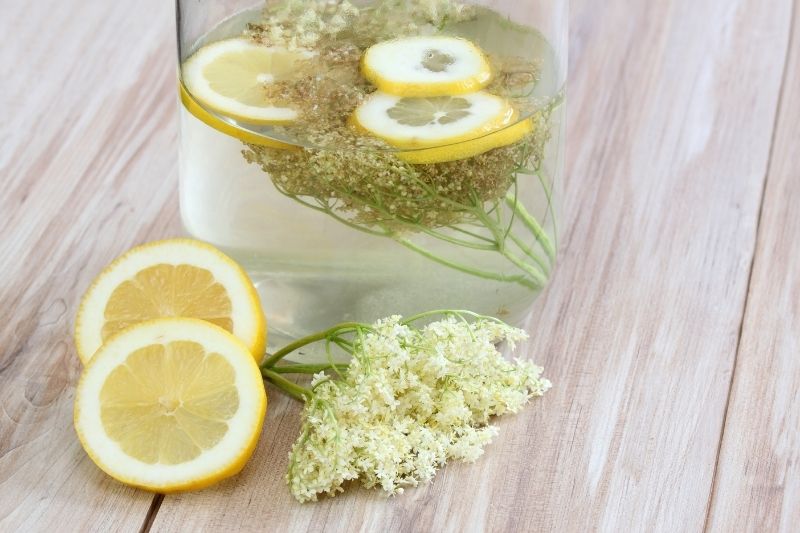
What are the benefits?
Elder, in addition to providing a tasty hot drink for winter, has medicinal properties.
It's a perfect plant for relieving minor ailments during the cold season. It is said to have sudorific properties, meaning it helps reduce fever, as well as diuretic effects. And it may also have an effect on the bronchi. Those familiar with homeopathy may have already made the connection with small lozenges bearing the plant's Latin name.
Additionally, the black elder has many other uses, particularly its fruits, which can be consumed once cooked. It is truly a shrub worth adopting, even though it doesn't have as good a reputation in France as it does in Eastern Europe, where its benefits have long been recognised.
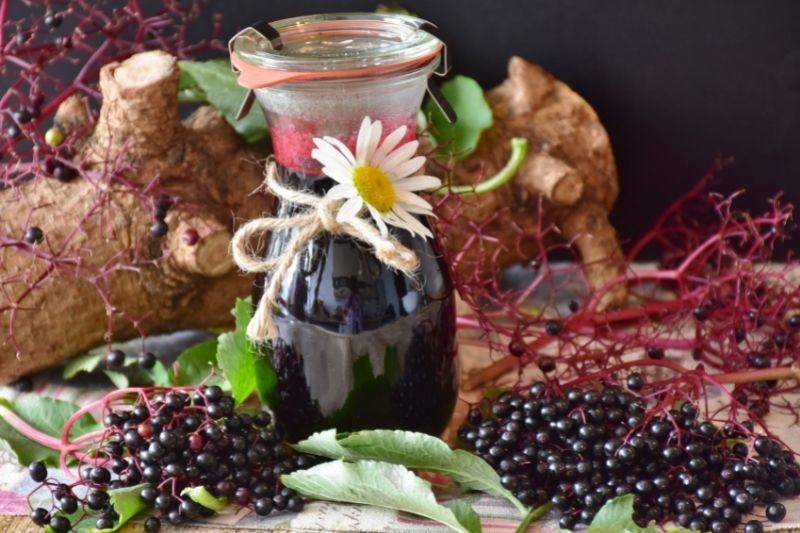
Elderberries can be eaten after cooking.


































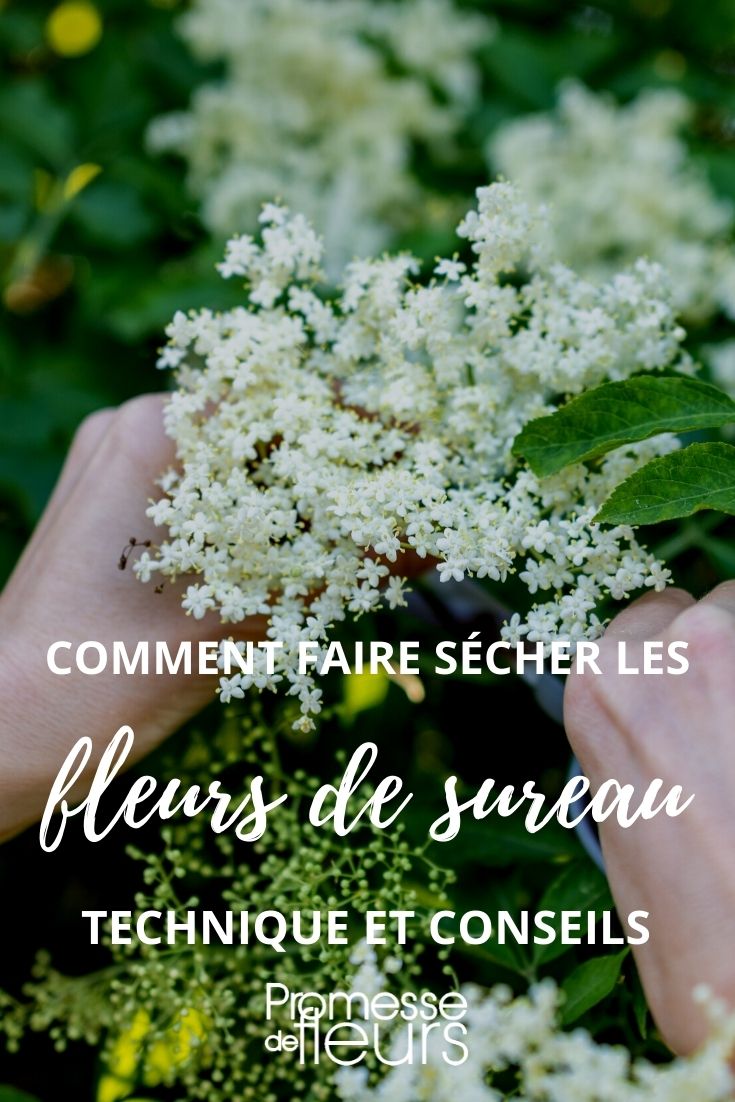
Comments